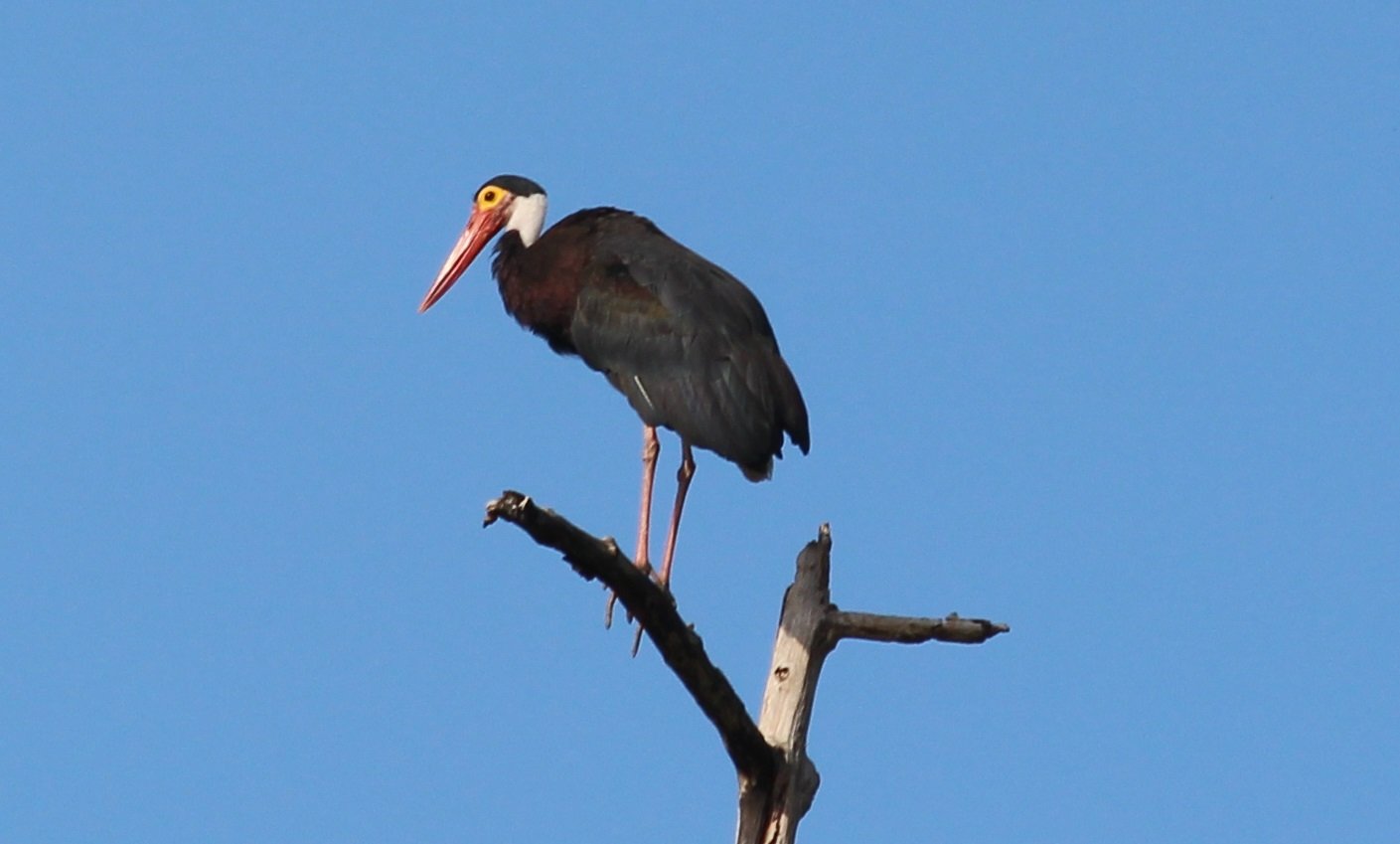
I’m at a yearly disadvantage when it comes to deciding my Best Bird of the Year (BBOY) here on 10,000 Birds. This is because unlike most of the writers here I live in the Southern Hemisphere, which means that like a lot of people over here I take my yearly long break over the Christmas period. When all of you are settling in inside away from the snow for family, food and arguments, we’re all getting our travel on. So while most people have picked their BBOY by Thanksgiving, each year I have to nominate a bird knowing I could very well see something better between the story publishing mid December and everyone getting drunk on the 31st. In fact, I can often guarantee it.
Last year was no exception. I’d had a fair but unexceptional year, but Borneo was waiting for the ten or so days after the story was published, so I had to nominate something that wasn’t my BBOY for my BBOY. That’s why I went for an albatross, because it wasn’t my BBOY, but it would at least tweak Corey. Honestly, I love albies and all, but they aren’t exactly rare down here. All you need is a boat, or a scope on a windy day. (The scope is to give you the illusion you might be able to work out the species). There were a couple others I could have gone with, like a Oriental Stork and Eurasian Bittern in the same bin view in Hong Kong or a singing lyrebird, but none of them had the double hit of excellent birding and insubordination I was looking for.
Borneo did turn up some great birds, as expected, but it still turned out to be quite hard to pick a winner. I mean, how do you pick between a handful of broadbills, Rhinoceros Hornbills, two pittas, a falconet and the Whiskered Treeswift? In the end the Oriental Stork I saw in Hong Kong was prophetic, as it proved to be one of two bookends for the year, and I picked the Storm’s Stork.
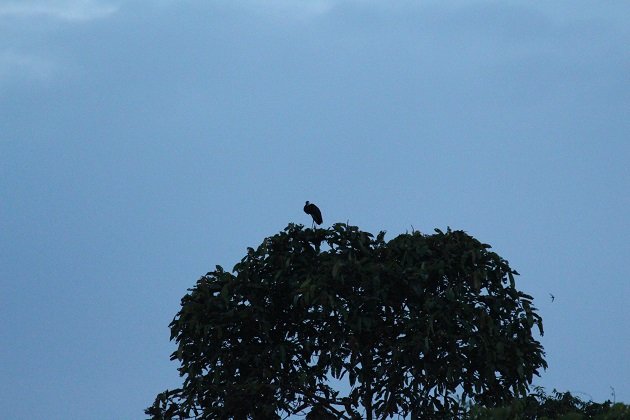 My first view of this amazing species! Note bonus swift in background (no idea what species)
My first view of this amazing species! Note bonus swift in background (no idea what species)
Storms’s Storks, which have one of the most dramatic names of any bird, are a Sunda specialty, meaning you’ll need to go to Malaya, Sumatra or Borneo to see one. People who follow conservation may recall this range overlaps nicely with an area that has suffered a distressing amount of deforestation and general habitat loss in the last few years, and unfortunately this has had a dramatic effect on the species. Indeed their wild population has shrunk and now numbers less than 500 adult birds, which is pretty small for a large bird in such a large area.
Storm’s Stork
I saw the species in one of it’s remaining strongholds, the Kinabatangan River. It’s fairly reliable here, and usually seen, it seems, perched high on branches above the river. I described it as stunning in an earlier post, and it is, but it also has an unfinished look about it too. The adults don’t look as crisp as you’d expect, or as you’d get in an adult White Stork or Saddlebilled Stork.
A lot of Asia’s storks are threatened by human activities. I saw one other species of stork on the river, the Lesser Adjutant, a species that can be seen in Borneo but one people aren’t sure even breeds in Borneo anymore. Greater Adjutants are even rarer. But the news isn’t entirely gloomy, as numbers of Asian Openbill Storks have recovered in Thailand after crashing. With conservation and goodwill perhaps the other species can begin to make a recovery, including the Storm’s Stork.
Who knows what my BBOY will be next year, but rest assured I won’t tell you about it too quickly!


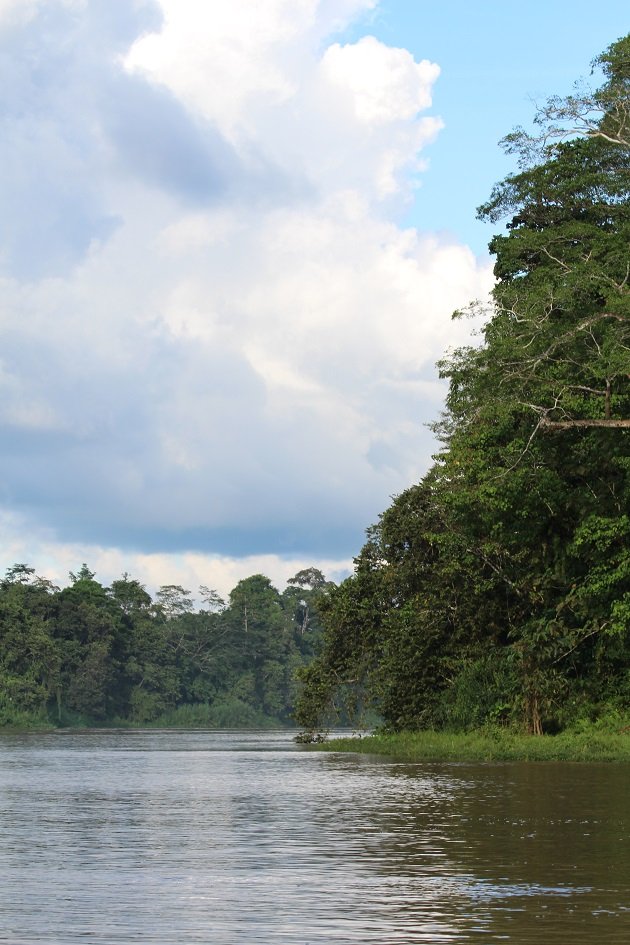
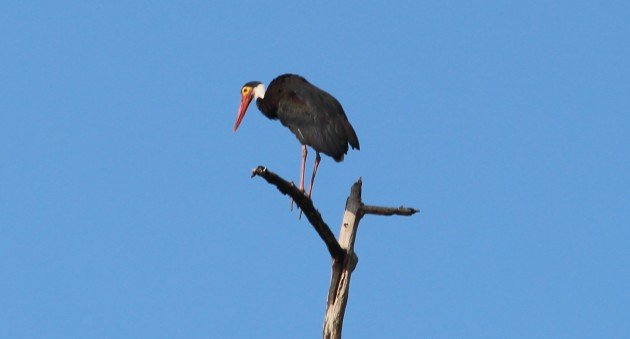
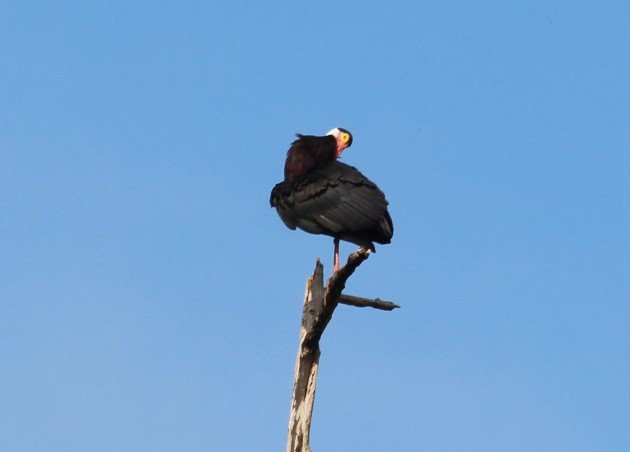











Having a chance to occasionally visit South Kalimantan, I always hope and dream – possibly aided by deliriously high humidity and temperatures and lack of non-spicy/hot food – of a Storm’s Stork flying by. It ain’t gonna happen, but it’s just the sweetest thing to dream about.
I guess that’s an alright bird. 🙂
Maybe we need to do an antipodean post every summer to give each hemisphere a chance to shine.
What a relief. When I first saw this post title, I thought that the spambots had finally gotten to 10,000 Birds and was changing years on us. Good to see that it’s only a hemispheric rebellion.